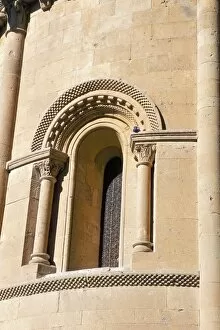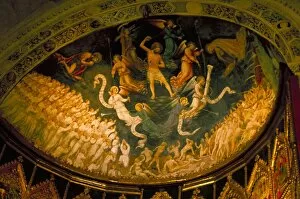Romanesque Collection (page 86)
Romanesque architecture, characterized by its sturdy and imposing structures, emerged in Europe during the 11th and 12th centuries
All Professionally Made to Order for Quick Shipping
Romanesque architecture, characterized by its sturdy and imposing structures, emerged in Europe during the 11th and 12th centuries. This architectural style is evident in various iconic landmarks around the continent. One such example is the Bayeux Tapestry, a remarkable masterpiece that depicts scenes from the Battle of Hastings in 1066. The tapestry showcases intricate details and vivid colors, providing a glimpse into medieval life. Neuschwanstein Castle in Germany also exhibits Romanesque elements with its grandeur and fairy-tale-like appearance. Perched on a hilltop, this castle offers breathtaking views of the Allgau region and stands as an epitome of architectural beauty. Cologne Cathedral, a UNESCO World Heritage Site located in North Rhine Westphalia, Germany, showcases stunning Romanesque features. Its towering spires dominate Cologne's skyline and attract visitors from all over the world to admire its awe-inspiring design. The Romanesque altar from Sagas portrays biblical scenes like The Visitation and Nativity with exquisite craftsmanship. These artworks provide insights into religious devotion during that era. Santiago de Compostela in Spain holds immense significance for pilgrims who travel along the Camino de Santiago route. Its cathedral exemplifies Romanesque architecture while serving as a spiritual destination for countless believers. The Knight of Templar Chapel represents another aspect culture – crusades. This chapel symbolizes chivalry and dedication to protecting Christian interests during these historical conflicts. Notre-Dame Cathedral in Bayeux, Normandy boasts an impressive east end showcasing magnificent examples design. It stands as a testament to France's rich architectural heritage throughout history. St David's Cathedral situated in Pembrokeshire, Wales reflects both Norman influences alongside traditional Welsh styles within its structure – blending seamlessly to create an extraordinary place of worship. In Zadar county within Croatia's Dalmatia region, the Cathedral of St.
















